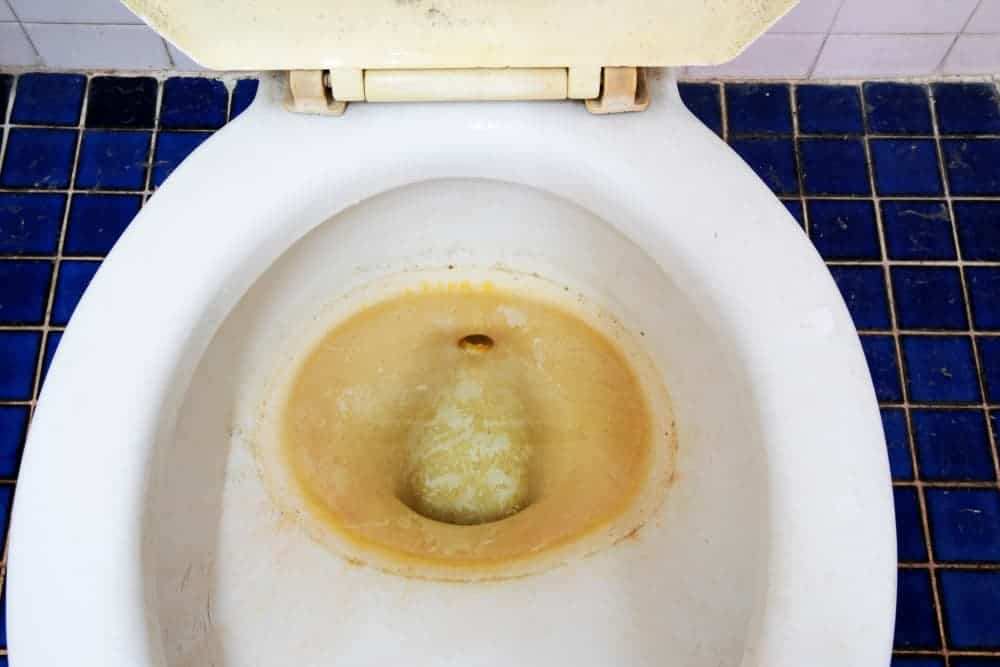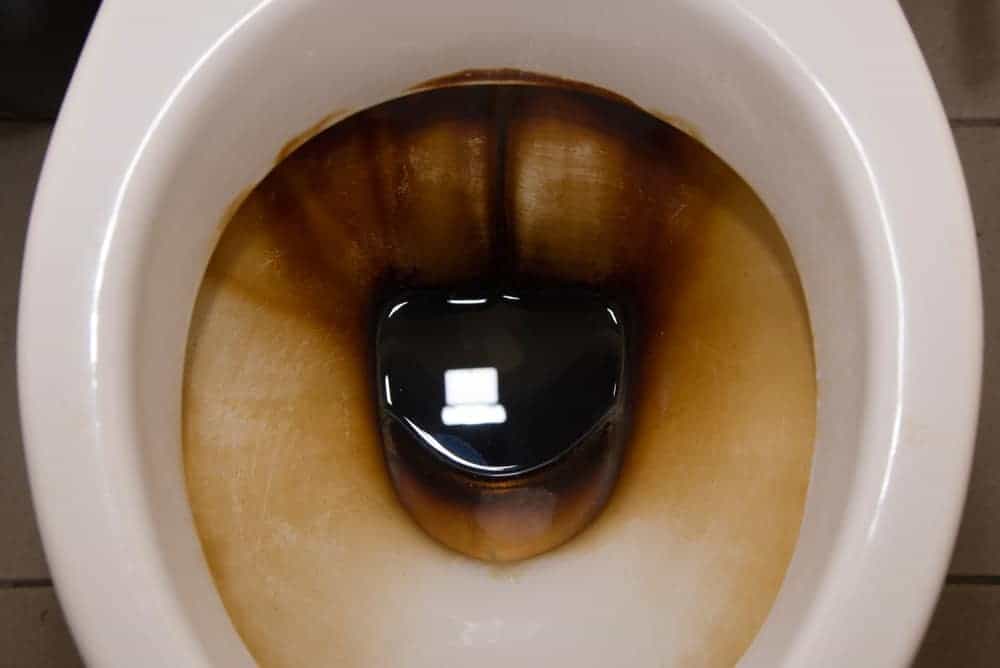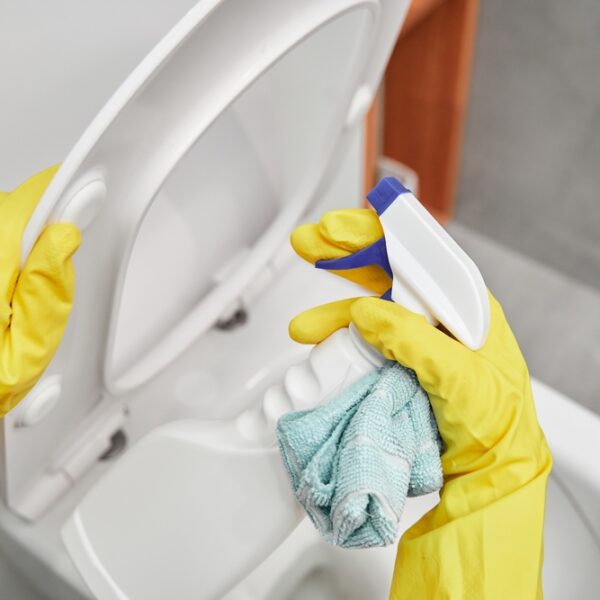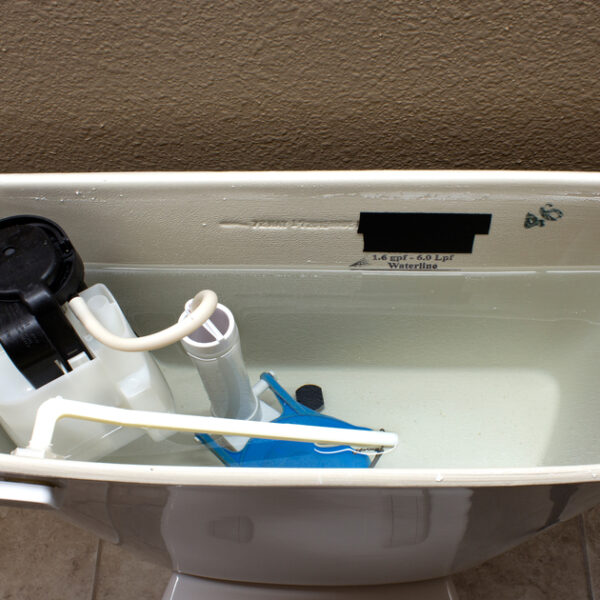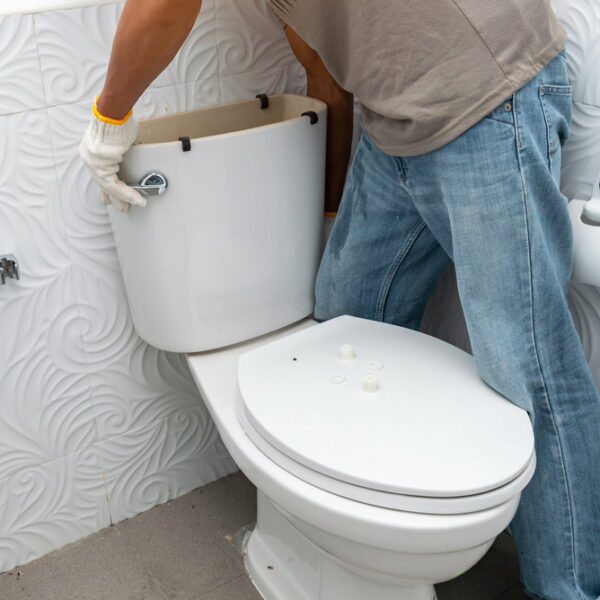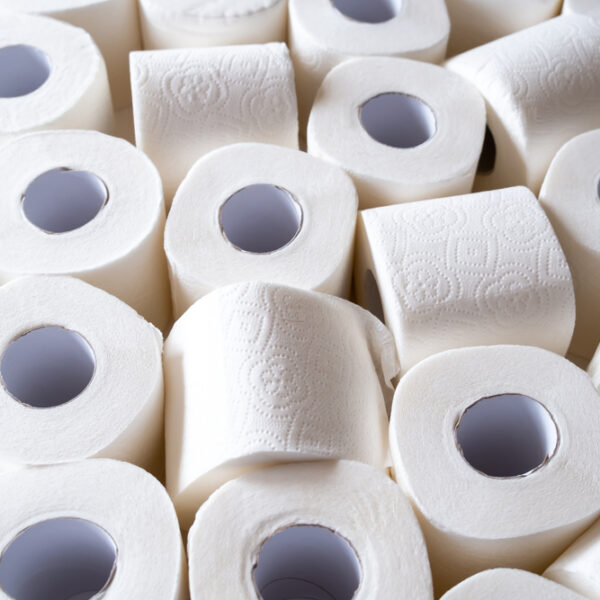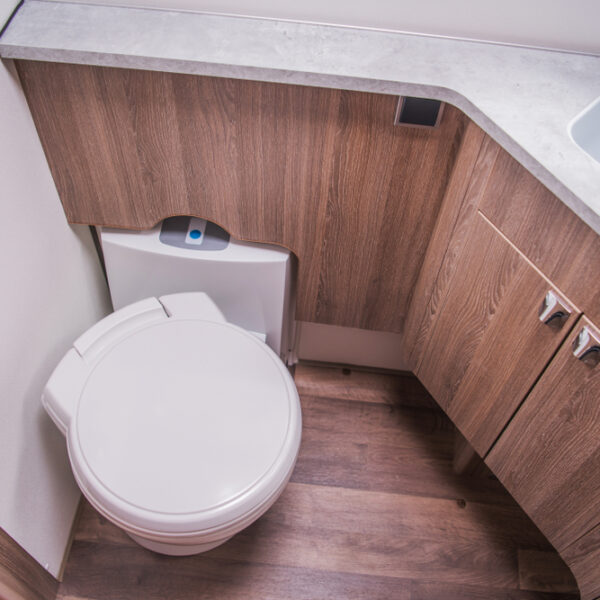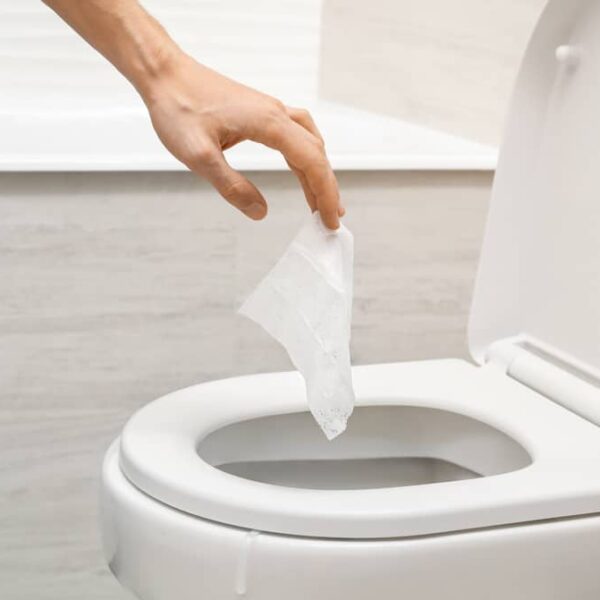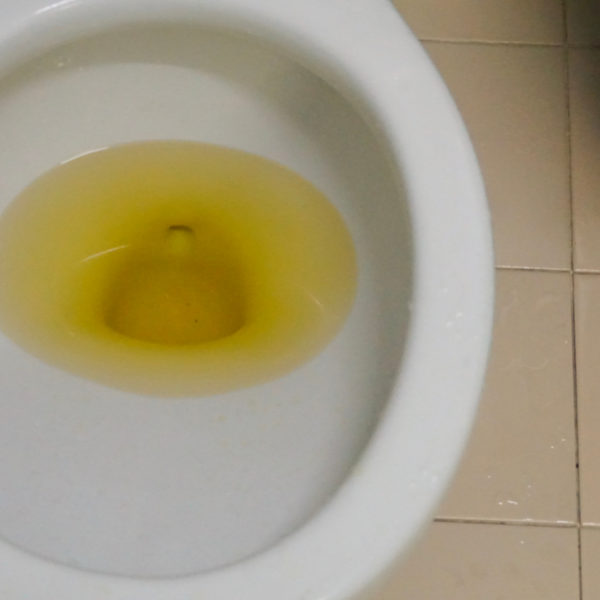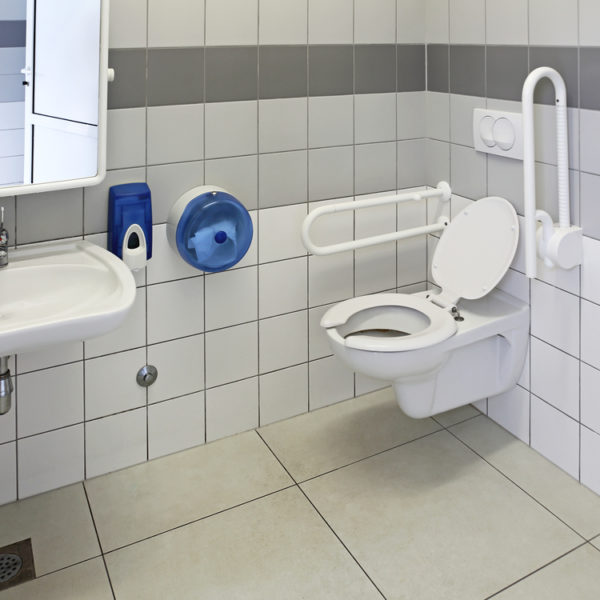Nobody enjoys cleaning the toilet, but it’s just something we have to do if we want it to stay clean and hygienic. But sometimes, no matter how hard we try, dirty, persistent stains still manage to appear and then refuse to shift.
However, when this happens, rather than taking the extreme step of replacing the toilet, there are some things you can try first – and in this post, we have all the info you need about how to clean a very stained toilet bowl.
Identifying the cause of the Very stain
Before we look at how stains can appear, it’s a good idea to think about how they get there in the first place.
Although the way to clean most stains is the same, regardless of why they are there, if you know where a stain came from, at least you can take steps to prevent it from reappearing in the future.
1. Urine stains
One of the most common types of stains you may find in your toilet bowl, on the toilet seat or even around the toilet is urine stains, which can be identified by their yellow or brown color – and often, the accompanying smell.
The color in urine comes from a chemical called urobilin, sometimes also known as urochrome – and when urine is left on a toilet bowl or the toilet seat, this chemical causes stains to appear.
2. Hard water stains
Along with urine, the other major cause of stubborn stains in a toilet bowl is hard water mineral deposits.
When rain falls, the water is free of minerals, but in some areas, it passes through rock like limestone and picks up minerals including chalk, calcium, magnesium, iron and lime.
Then, when this water comes into contact with various surfaces, it leaves a mineral deposit. This is why kettles develop limescale, and a similar process can cause stains to develop in a toilet bowl.
Like urine, hard water can cause yellow or brown stains, but they may also be gray, green or black. You can tell them apart from urine stains since they usually appear around the waterline as well as in the places where water commonly runs when you flush.
3. Bacterial stains
Another type of stain that may appear is stains from bacteria. This type of stain is more common in other areas of your bathroom such as in the shower or on walls, but it can also appear in a toilet bowl if the toilet is not cleaned regularly.
If you find orange or pink stains anywhere in your bathroom, it’s likely to be due to bacteria. However, bacterial stains can also be a slimy brown color, especially in places where water runs. This kind of stain is also common in showerheads.
4. Rust stains
Similar in color to brown bacterial stains but less slimy in appearance, rust stains may indicate that corrosion is taking place in your pipes.
This means once you have removed the stain itself, you should also check the condition of the pipes since the corrosion may eventually lead to the pipe bursting and water leaking out.
5. Stains from UV rays and age
A final type of “stain” is caused by UV rays – or eventually, just age.
Toilet bowls and especially plastic toilet seats will gradually lose their color with time, and this happens much faster if they are located in direct sunlight.
There is nothing you can do to clean this type of stain since it isn’t really a stain – rather, the color of the material has been altered, so the only solution here is to replace it if you want to restore the new look.
Different methods for removing Very Stained from Toilet Bowl
There are several different products you can use to remove stubborn stains, some of which are natural and gentle on the environment and other that are based on harsher chemicals.
When you have a very stained toilet, perhaps the best approach is to try a combination of different products to see what produces the best results.
Here are some of the things you can consider using for cleaning toilets – and these techniques will work for most kinds of stain.
1. White vinegar
Vinegar has long been known as a near-magical cleaning elixir than can be used for a whole range of household chores – and cleaning stubborn toilet stains is one of them.
The active ingredient is acetic acid, which helps break down all kinds of stains without the need to turn to harsh chemicals.
The other advantage is that, although it does have a pungent odor, the smell of vinegar is preferable to strong-smelling chemicals for most people. The smell also dissipates quickly.
White vinegar intended for cleaning is both extremely inexpensive and easy to find.
2. Lemon juice with essential oils
Like vinegar, lemon juice is a great option for a whole range of cleaning applications due to the citric acid it contains. An extra advantage here is that the smell is quite pleasant – and the effect, as well as the odor, can be enhanced by the addition of essential oils.
3. Bicarbonate of soda
Bicarbonate of soda, also often called baking soda, is an inexpensive cleaning agent that most people will have access to in their home – and if not, it’s easy to find in any regular supermarket.
Bicarbonate of soda comes as a powder, but it can be mixed with water to make a paste that does a good job of removing stubborn stains. It can also be mixed with vinegar instead for even more potency.
4. Borax
Borax, also known as sodium borate, comes in powder form and can be used as a toilet bowl cleaner in a similar way to bicarbonate of soda.
5. Cola
A more unusual but surprisingly effective method of removing toilet bowl stains is to use cola. This is because coke is mildly acidic, and the carbonation may also help – especially when combined with bicarbonate of soda. Coca-Cola or other brands work equally well.
How to remove stubborn stains from a toilet?
As we mentioned above, perhaps the best way to remove stubborn stains is to try using several of these cleaning products together to see which combinations produce the best results. Here’s a suggestion for how to proceed:
What you’ll need
- Vinegar
- Bicarbonate of soda
- Non-abrasive toilet brush
- Cloth or sponge
- Cup for mixing
- Old spoon or spatula
Step 1. Remove the water from the toilet bowl
If the stain you need to remove is at or below the waterline, the first thing you’ll need to do is drain or remove the water from the bowl.
To do this, you can simply scoop out as much water as possible with an old cup and then mop up the remainder with a towel. Alternatively, here’s a video showing you another way of doing it.
If the stain is higher up around the rim of the toilet, removing the water might not be necessary – although you might find it makes things easier if you remove it anyway.
Step 2. Mix a paste of bicarbonate of soda and white vinegar
In the cup, mix up a paste of bicarbonate of soda and vinegar with a ratio of 2:1 bicarbonate of soda to vinegar.
Step 3. Apply to stained area and leave to take effect
Apply the paste to the affected area using an old spoon or a spatula. You can also do this with your fingers, but most people probably won’t enjoy touching the toilet with their hands.
Once the paste is applied, simply leave it there to act on the stain. The minimum time should be about half an hour, but if you leave it longer, it will have more time to do its work.
Step 4. Scrub off with toilet brush
Once you feel the paste has been on long enough, all you need to do is scrub it off with your toilet brush. Give it a thorough scrub to make sure you remove the stain completely.
Step 5. Rinse and wipe down with sponge or cloth
After scrubbing, all you need to do is pour some water into the toilet to wash the last of the paste off and wipe it down with a cloth or sponge. Check to see if the stain has been removed and then give the toilet a flush or two to wash away the paste and fill the bowl with water.
Step 6. Repeat as necessary
After completing all these steps, if you think the stain hasn’t completely disappeared, you can simply repeat once or twice more to see if you can achieve more satisfactory results.
Step 7. Repeat with lemon juice and essential oil or borax and vinegar
If repeating two or three times doesn’t have any effect, you can also try the same method using lemon juice and essential oil instead of bicarbonate of soda and vinegar paste.
The other alternative is to mix borax with vinegar instead of using bicarbonate of soda.
If you try these different combinations two or three times, you should be able to completely remove even the most difficult of stains.
It might take a bit of time to do and require a little elbow grease, but at least it’s a lot cheaper than replacing your whole toilet.
PRO Tips
Here are a couple of other points to bear in mind while cleaning stubborn stains from your toilet bowl.
-
Don’t use abrasive brushes
Make sure you don’t use an abrasive brush on your toilet seat or on the toilet bowl.
If you do, it may remove the stain, but it will also scratch the porcelain, making it look just as bad. Furthermore, scratched toilets stain more easily, so you will just be making things worse in the long term.
You may also see some sites online recommending the use of pumice stone – but this should be avoided since it may damage your toilet bowl.
-
Wear gloves
Wearing rubber gloves while cleaning the toilet is a good idea. Not only is it more hygienic, but it will also protect your skin from potentially harmful substances.
-
Soak a stained toilet seat in bleach
If your toilet seat has developed stubborn stains, try soaking it in a solution of chlorine bleach. This is a quick and effective way to remove stains – especially urine stains – from the removable part of the toilet.
To do this, you will need something larger than a regular bucket that can fit the seat, and you should make sure you read the instructions on the bottle carefully – because if you don’t dilute the bleach enough, it could damage and stain your toilet seat further.
Preventing stains from developing
Sometimes stains develop in your toilet that can be incredibly difficult to remove, and although the methods we’ve outlined should help, it’s far better to prevent them from appearing in the first place – and the key to this is regular cleaning.
Make sure you don’t leave any urine splashes on your toilet seat or bowl, and try to clean your toilet at least once a week.
This will prevent any urine stains from developing and it will also stop mold, mildew and mineral buildup on your appliances too. This way, you will ensure that the stains don’t take hold, which will save you lots of hard work trying to remove them later.
No need to replace your toilet bowl just yet
While stubborn, difficult stains can be unpleasant and unsightly, you don’t need to start thinking about buying a new toilet just yet.
Instead, roll up your sleeves and try some of the ideas we’ve given you in your post – and you’ll probably find you can manage to remove the stains by yourself without needing to spend a whole lot of money.
